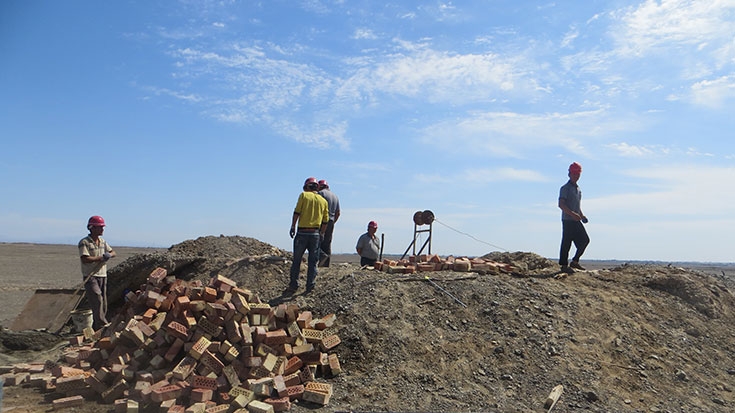The Turpan Basin, in Xinjiang Uygur Autonomous Region, is the hottest and driest area in China. Water is precious in this arid place, anciently called “Land of Fire”.
The 600,000 residents in the Basin, mostly Uygurs, have traditionally relied on water from the rivers that originate in the mountainous areas, or from ancient Karez water supply systems for irrigation of their crops and orchards. But with rapid economic growth in recent years, increasing consumption of water is exceeding supply and has led to severe groundwater over-exploitation.
Managing water resources better
To secure the area’s limited water supply, the Xinjiang Turpan Water Conservation Project supported by the World Bank, is helping improve water resources management there.
Since 2010, various measures have been adopted to bring about water savings, including rehabilitation of canals delivering water from reservoirs to water users downstream, a switch from furrow to drip irrigation, land leveling, and improved drainage.
The World Bank and local government are also piloting various innovative real water-saving approaches in the project. Specifically, an evapotranspiration-based integrated water management system has been introduced for the assessment, planning and allocation of water for consumptive use, supported by the world’s latest remote sensing technology on evapotranspiration measurement.
“We use state-of-art remote sensing technologies to monitor water consumption in this area, including the data collected by satellite Ziyuan III. With them, we are able to monitor accurately the water consumption of each parcel of land and differentiation in water consumption within each parcel,” said Dr. Wu Bingfang, with the Institute of Remote Sensing and Digital Earth under the Chinese Academy of Sciences.
“Monitoring of water consumption helps farmers plan their irrigation properly, which will improve the quality of fruit they grow and thus increase their income,” he said.
Thanks to these measures, Abdul Hemudul and Gulnisahan Yimit, grape farmers in Turpan, are reaping the benefits.
“Before, half of the grapes grown in my village dried up before going ripe because of water shortage,” said Hemudul. “Now, with better management and smarter irrigation, we no longer worry about it.”
Gulnisahan Yimit said that this year she was able to irrigate her grape farm three times more than last year.
“We have more drinking water as well,” she added.
Turpan produces some of the sweetest fruit in the country – grapes, melons, pears, apricots, peaches…For fruit growers, better water resources management has brought not only increased water supply but also increased income.
“The income of my family grew 30% this year. I know other villagers also had an income increase. We are all very happy,” said Hemudul with a smile.

